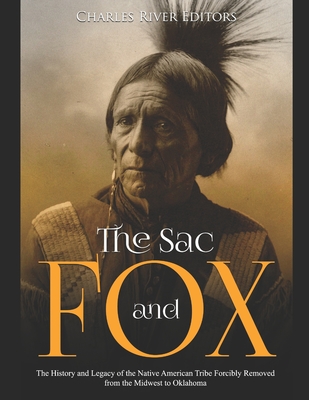The Sac and Fox: The History and Legacy of the Native American Tribe Forcibly Removed from the Midwest to Oklahoma

The Sac and Fox: The History and Legacy of the Native American Tribe Forcibly Removed from the Midwest to Oklahoma
*Includes pictures
*Includes a bibliography
Few people need to be reminded in the 21st century of the cost of European imperialism and colonization on indigenous and native cultures around the world. The increasingly controversial view of "Columbus Day," still represented on the United States commemorative calendar, attests quite clearly to an ambiguous modern view of early European encounters with Native Americans. Slavery, disease, land and resource appropriation and the rapid disintegration of indigenous societies are all characteristics of European global expansion. There are those societies, particularly in Asia and Africa, that proved resilient enough to weather the European imperialism, but others, most notably those of Australia and North America, certainly did not.
The development of North America as a series of British colonies prior to the end of the 18th century went ahead without any definitive policy in regards to the Native Americans who were impacted, displaced and not infrequently overwhelmed by the process. The vast majority of Native American people continued to live in a state of grace long after the formation of the colonies and did not begin to feel the impact until the expansion west. Likewise, there could never be a coordinated, pan-tribal unity to confront this gathering invasion, since the indigenous population of the land was heterogeneous, speaking some 300 separate languages, and thousands of regional dialects, and very often they were at war with one another. Some saw an advantage in collaboration with the forces of colonization, and some not. The fate of the former was usually some form of unequal assimilation, and of the latter, removal or extermination, and often both.
Natives in the east, vastly superior in numbers and resistant to the importation of pernicious disease, proved better able to surmount the colonial experience and emerge as an independent nation. No such good fortune attended the colonial experience of Native America. While the introduction of various epidemics of smallpox, measles, diphtheria and many other diseases, and numerous lingering and communicable diseases such as tuberculosis and syphilis, steadily eroded populations, the far greater political and social trauma took place as a consequence of an ongoing, and unending hunger for land.
The end of the American Revolution and the 1776 Declaration of Independence introduced no particular change in the circumstances of the indigenous
PRP: 86.34 Lei
Acesta este Prețul Recomandat de Producător. Prețul de vânzare al produsului este afișat mai jos.
77.71Lei
77.71Lei
86.34 LeiIndisponibil
Descrierea produsului
*Includes pictures
*Includes a bibliography
Few people need to be reminded in the 21st century of the cost of European imperialism and colonization on indigenous and native cultures around the world. The increasingly controversial view of "Columbus Day," still represented on the United States commemorative calendar, attests quite clearly to an ambiguous modern view of early European encounters with Native Americans. Slavery, disease, land and resource appropriation and the rapid disintegration of indigenous societies are all characteristics of European global expansion. There are those societies, particularly in Asia and Africa, that proved resilient enough to weather the European imperialism, but others, most notably those of Australia and North America, certainly did not.
The development of North America as a series of British colonies prior to the end of the 18th century went ahead without any definitive policy in regards to the Native Americans who were impacted, displaced and not infrequently overwhelmed by the process. The vast majority of Native American people continued to live in a state of grace long after the formation of the colonies and did not begin to feel the impact until the expansion west. Likewise, there could never be a coordinated, pan-tribal unity to confront this gathering invasion, since the indigenous population of the land was heterogeneous, speaking some 300 separate languages, and thousands of regional dialects, and very often they were at war with one another. Some saw an advantage in collaboration with the forces of colonization, and some not. The fate of the former was usually some form of unequal assimilation, and of the latter, removal or extermination, and often both.
Natives in the east, vastly superior in numbers and resistant to the importation of pernicious disease, proved better able to surmount the colonial experience and emerge as an independent nation. No such good fortune attended the colonial experience of Native America. While the introduction of various epidemics of smallpox, measles, diphtheria and many other diseases, and numerous lingering and communicable diseases such as tuberculosis and syphilis, steadily eroded populations, the far greater political and social trauma took place as a consequence of an ongoing, and unending hunger for land.
The end of the American Revolution and the 1776 Declaration of Independence introduced no particular change in the circumstances of the indigenous
Detaliile produsului










